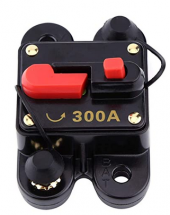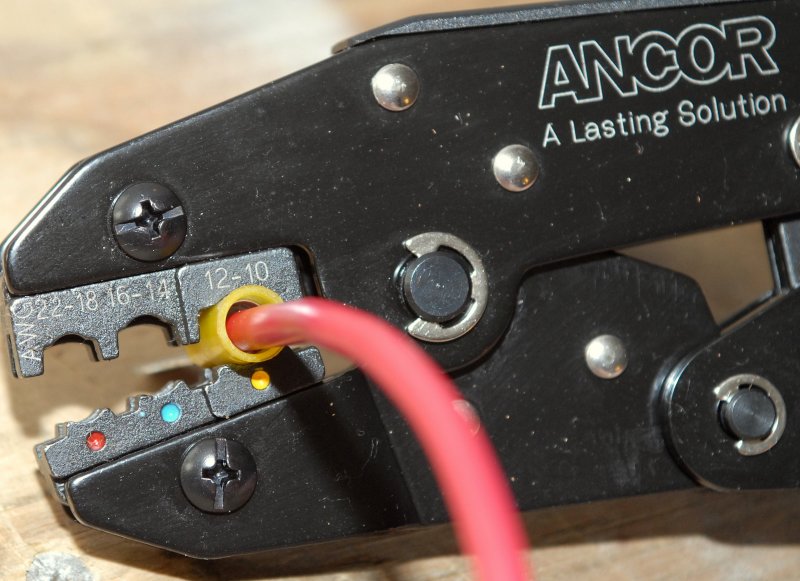73powerstroke
Solar Enthusiast
I guess I'm not doing too well here.I don't normally post up what I have for a background, but for you, I'll make an exception.
The first lesson you need to learn as an automotive mechanic, which I am not, I am an automotive master technician of over 35 years of shop ownership; is when constructing anything, whether it is an electrical circuit, an exhaust system, building a house, virtually anything, you should make it look like you knew what you were doing. If you don't know what you're doing, then you should educate yourself on the proper methodology and practice.
What I'm trying to understand is how anyone could go thru formal training as an automotive tech in this day and age and not know what load testing of a lead acid battery truly is and how the results should be interpreted. Then we move on to voltage drop testing of a circuit, how it should be performed and determining resistance in a circuit.
If you don't know, then get educated. If you want to hang out with real professionals in the industry, then I suggest you step up to the real university of automotive repair knowledge online, known as IATN, International Automotive Technicians Network. You can join for free with a basic membership as long as you qualify. http://www.iatn.net/
I've been a sponsoring member there since 2004. The best in the industry hung out there, there was some that left or passed away over the years but the knowledge there is top notch. Step up your game, become a true professional. Redneck crap in the days of increasing technology, complexity and systems integration is no way to go thru life, much less a career. And be prepared to have a thick skin, you will have members call you out if you try to con your way thru, sharp bunch but you will learn from mistakes too.
The reason I posted this, and no, my complete business model is not entirely as an automotive technician, is because I see what I consider very substandard methods used to build an electrical circuit in your photos. While you believe if it "works", it's good enough, however over the last 40 plus years of turning wrenches and repairing electrical circuits and components, I can tell you the workmanship you have with your current standards is destined for failure and quite likely catastrophic.
Instead of being good at breaking stuff, you should strive to build the best "product" you can. It takes not only an investment of your time to gain knowledge but also to put it into practice.
I won't excuse that. I cut corners and used what I had easily available.
I was just trying to see if I could run a window ac unit off a few cheap batteries and hf panels originally.
I got hell for the panels. At 6 it worked for intermittent use.
People told me about san tan solar in gilbert az so I drove there a few time and bought 8 panels and 2 epever 40amp tracer 4210an cc and pv wire, pv connectors, branches, shunt meter, 6ga wire for cc to battery. And 6ga lugs. The rest wasn't easily available.
I got 2ga wire from verne Lewis welding supply. Some lugs from them but too big of holes. So I made some. I crimped them slightly and flowed solder into the connection. I dont have any protection on anything. I have Dean hobby connectors where the 10ga wire feed the cc solar in on one the other was too short and has 14ga wire for a few feet.
I geuss I should probably tear it all down and put it up. I don't know what I'm doing here. And every thing looks bad.
I went to lake Washington technical College during the 2008 crash. I got a quick ibest automotive technician certificate of completion. 1 year plus.
We glazed over the basics. Deivability, diagnostics, hybrids, brakes and suspension, engine, shop principles.
I was still actively drinking alcholicly back then . Ruff times.
I went on to work for several midas shops and several smaller import shops. I was unreliable due to my heavy drinking. Jobs came and went often. My only plus is im im ok with diagnostics and can slove hard problems others fail at. Ive always used a load tester on batteries. I dont own one. Temperature comp on some others just big toaster load boxes, voltage drop is something i understand, and use alot, like the inverter has some vd even with 2ga wire, i should have bought the 00/2 set but oh well. As the v drops on the inverter the current demand increases, it sucks...Otherwise im a terrible mechanic and i don't enjoy it anymore where i used to when i was into fast cars. Now i just fix my high miles diesels and avoid automotive work.
so i guess its not acceptable to say im a auto mechanic.
I have zero interest in working automotive unless I own the shop. I'm 45. I'm not fast. And I'll never beat the flat rate. So I don't work flat rate unless it's a modified guarantee. In Washington state average pay was 20 here it's 15 or less. I cant live off that with 3 kids to support.
Anyway I appreciate the reality check. I was going to go to San tan solar tomorrow for fuses and breakers and pv panels and some extensions but I guess I'll scrap that idea and I'll take this stuff apart before something bad happens.










